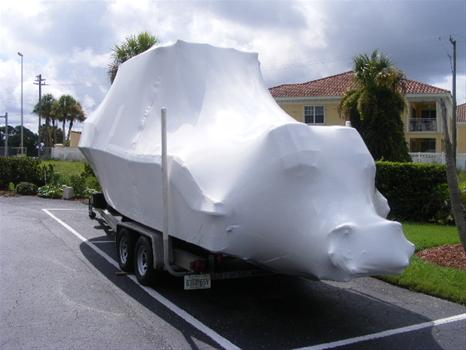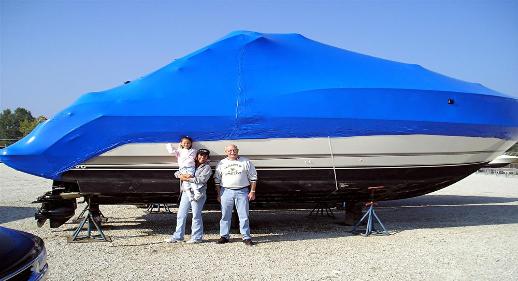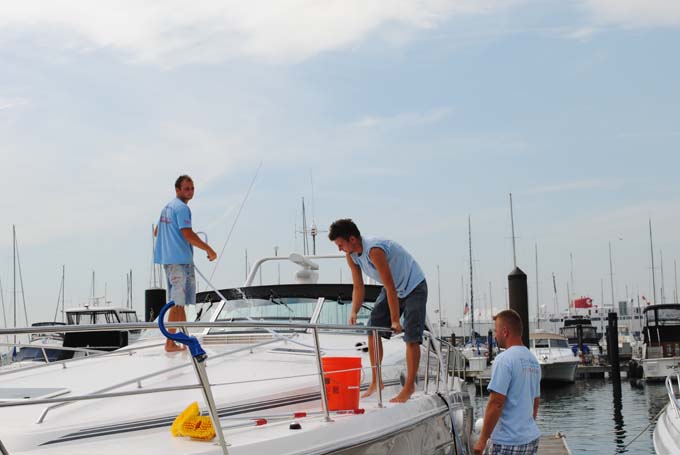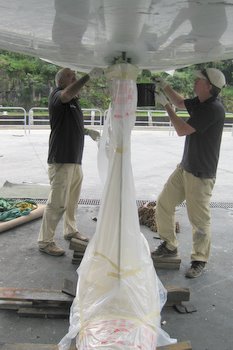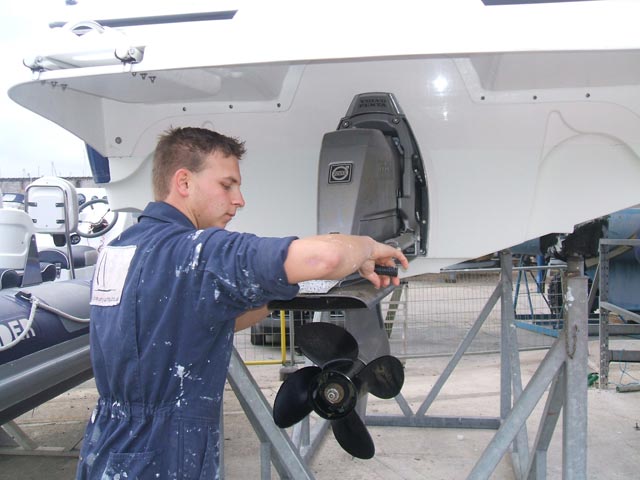The boating season is winding down and it is time to start thinking about protecting your valuable recreational asset. The time and effort you spend now will have a definite effect on your boat’s performance, or lack of it, and certainly save you time, effort and money come next season. You should remember that your insurance policy may not cover damage done by lack of maintenance or neglect. The best place for your boat to be during the monsoons is out of the water, under cover, in a climate-controlled boat storage area. If you don’t have this option perhaps you should consider shrink-wrapping your boat. This provides a very protective cover. Short of these two items, make sure that your boat is well covered with a tarp or some other sturdy cover.
There is one thing every boat needs – maintenance. Routine maintenance and even small repairs aren’t that tough and in the long run, a little elbow grease will definitely pay off. The first and simplest task is to wash your boat regularly. And if you boat in saltwater, rinse your boat thoroughly with fresh water after every outing to remove salt residue. To protect your boat’s finish, be sure to use soaps and cleaners made just for boats. a boat with a clean hull bottom is more fuel-efficient than a hull that’s covered with algae or other aquatic scum. A dirty hull can easily add up to 30% of fuel cost!
Just like cars, boats need to have their oil changed. Four-stroke outboards, inboards and stern drive boats require regular oil changes. The frequency will vary by model, but a good rule of thumb is to change the oil every 100 hours of operation or at least once a year.First, start the engine to warm it up. Turn it off, remove the drain plug, drain the old oil, change the filter, replace the drain plug and fill the engine with new oil. Use marine grade oil in your boat engine. Boat engines work much harder than car engines and automotive oil isn’t made to protect marine engines.
If you have an outboard or stern drive boat you should check the propeller. You should also remove the propeller several times during the season to make sure discarded fishing line hasn’t become wrapped around the propeller shaft. If it has, have your dealer inspect the gear case, because fishing line can cause gear case leaks and gear case service is NOT a do-it-yourself job. While you have the propeller off, inspect it for nicks, dents and other signs of damage. It’s OK if your prop is massing paint, but send it out for repairs if you find signs of impact. The smallest dent can cause your boat to lose 10% of performance and will burn more fuel than normal.
Once you have taken care of all this you should remove any valuables, electronics, lines, PFD, fire extinguishers, flares, fenders, etc. Over the monsoons these items can be cleaned, checked and replaced as necessary. Open all drawers and lockers and clean thoroughly. Turn cushions up on edge so that air is able to circulate around them or, better yet, bring them home to a climate controlled area. Open and clean the refrigerator and freezer. To keep your boat dry and mildew-free you might want to install a dehumidifier or use some of the commercially available odor and moisture absorber products such as “No Damp,” “Damp Away” or “Sportsman’s Mate.”
For more information on Yacht Maintenance & Storage facilities, contact us today on +91 9820673466 or email us at zinia@indiayachtpage.com or visit the link below.
http://www.indiayachtpage.com/archives/product/yacht-maintenance

